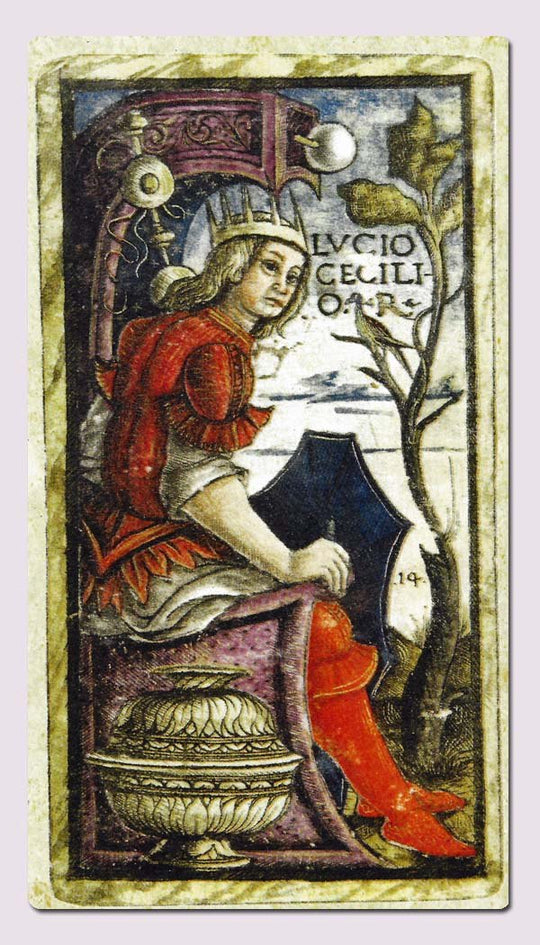
The Sola Busca tarot, one of the most enigmatic and influential tarot decks in the history of cartomancy and esotericism, holds a significant place in the evolution of tarot cards. This deck's origins and history intertwine with the cultural and historical context of the late 15th century.
Origin and Development
- Creation: The Sola Busca tarot is believed to have originated in the late 15th century, around 1491.
- Location: It is generally attributed to the Italian city-state of Venice, a hub of art, culture, and commerce during the Renaissance period. The deck was most likely created for a noble family or a court, although the specific details remain uncertain.
- Artistic Style: The deck reflects the artistic styles prevalent in Northern Italy during the late 15th century, particularly the influence of the Venetian school.
Notable Cards and Their Description
- Unique Features: Unlike the typical tarot decks, which feature the standard Major and Minor Arcanas, the Sola Busca deck is notable for its 78 fully illustrated cards, including the Minor Arcana. This was highly unusual for the time, as most decks only illustrated the Major Arcana.
- Major Arcana: The Major Arcana in the Sola Busca deck is rich with allegorical and symbolic imagery, blending classical, biblical, and esoteric themes.
- Minor Arcana: Each of the Minor Arcana cards is illustrated with intricate scenes, often depicting historical or mythological figures, making the deck stand out for its depth and complexity.
Social and Historical Context
- Renaissance Italy: The deck emerged during the Renaissance, a period of significant cultural, artistic, and intellectual growth in Italy. This era was marked by a revival of interest in the classical world, which is reflected in the imagery of the deck.
- Nobility and Courts: Tarot cards during this period were often commissioned by noble families and were considered luxury items. The Sola Busca deck, with its detailed artwork and complex symbolism, would have appealed to the educated elite, who had an interest in art, history, and the esoteric.
- Esoteric and Mystical Traditions: The late 15th century saw a growing interest in mysticism, alchemy, and the occult. The Sola Busca tarot, with its deep symbolic imagery, aligns well with the esoteric traditions of the time.
Influence and Legacy
- Impact on Later Tarot Decks: The Sola Busca deck significantly influenced the development of tarot in Europe. Its fully illustrated Minor Arcana set a precedent that was later adopted by the Rider-Waite-Smith deck, which became one of the most popular tarot decks in the 20th century.
- Preservation and Exhibition: Original Sola Busca decks are extremely rare and valuable. The decks are preserved in museums and private collections, and occasionally exhibited to the public.
While the Sola Busca tarot deck is a remarkable artifact with a rich history, there remain uncertainties regarding its exact origins, the identity of its creators, and the full extent of its influence on later decks. However, its significance in the evolution of tarot art and symbolism is unquestionable, making it a subject of enduring fascination for historians, artists, and tarot enthusiasts alike.





No comments:
Post a Comment